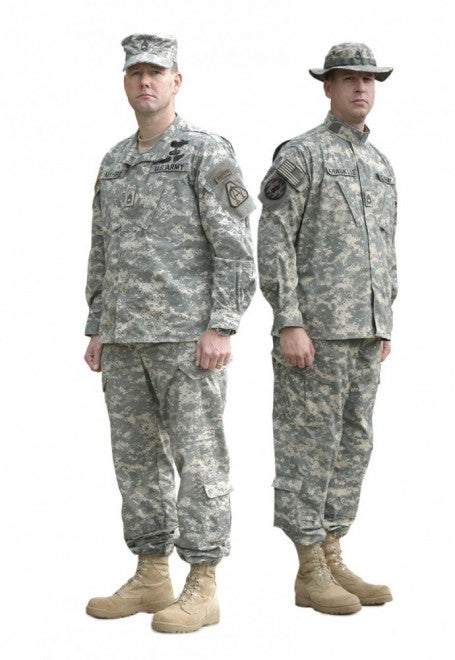US Military camouflage developments (or misadventures depending on your point of view) inevitably influence firearm and tactical gear industry. Poor designs, such as the much hated Universal Camouflage Pattern (UCP), had lead to the National Defense Authorization Act for Fiscal 2014 banning the development of service-specific camouflage. The economist has published an article about the military camouflage craziness …
The marines led the way in 2002 with a versatile and effective new combat uniform, which also served to boost corps morale because the marine insignia was embedded in the design. This inspired a cascade of one-upsmanship among the other services. The air force, for instance, spent several years and more than $3m designing a new “tiger-stripe” uniform that proved unsuitable for combat—the camouflage was ineffective, the trousers were uncomfortable and the fabric was too heavy, leading to “heat build-up”. The navy spent a lot less money developing the “aquaflage” uniform; but that is a silly blue ensemble that works best where sailors may least wish to blend, in the water.
The worst offender has been the army. The service spent years and about $3.2m developing its own “universal” camouflage. This pattern was designed to work anywhere, but proved useless nearly everywhere. Soon after it was introduced in 2005, soldiers in Iraq and Afghanistan began complaining that the pattern turned them into targets. Troops from Syria and China were clearly better equipped. Reports suggest that a high-ranking military official had chosen the pattern without consulting the data from years of studies. The army is said to have spent at least $5 billion on uniforms and equipment printed in this camouflage, which is still in use. In an emergency measure, the army kitted out soldiers in Afghanistan in a new pattern starting in 2010, spending more than $38.8m on replacement gear in fiscal 2010 and 2011.
It is interesting to note that UCP has also been adopted, in some capacity, by Tunisia, Ivory Coast, Malaysia, South Korea, Cyprus, Serbia, Argentina, Chile and Peru.
 Your Privacy Choices
Your Privacy Choices
